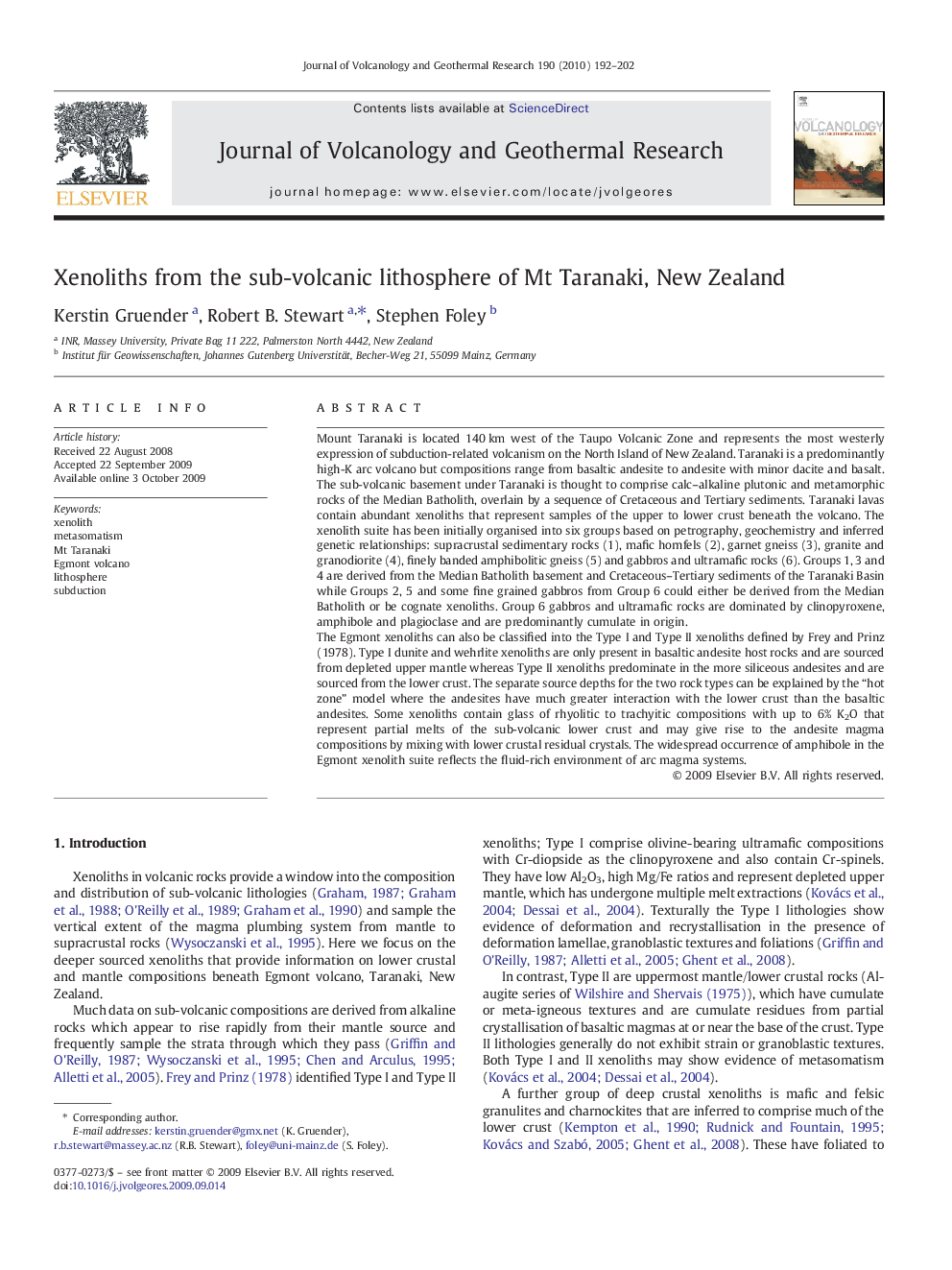| کد مقاله | کد نشریه | سال انتشار | مقاله انگلیسی | نسخه تمام متن |
|---|---|---|---|---|
| 4714007 | 1638425 | 2010 | 11 صفحه PDF | دانلود رایگان |

Mount Taranaki is located 140 km west of the Taupo Volcanic Zone and represents the most westerly expression of subduction-related volcanism on the North Island of New Zealand. Taranaki is a predominantly high-K arc volcano but compositions range from basaltic andesite to andesite with minor dacite and basalt. The sub-volcanic basement under Taranaki is thought to comprise calc–alkaline plutonic and metamorphic rocks of the Median Batholith, overlain by a sequence of Cretaceous and Tertiary sediments. Taranaki lavas contain abundant xenoliths that represent samples of the upper to lower crust beneath the volcano. The xenolith suite has been initially organised into six groups based on petrography, geochemistry and inferred genetic relationships: supracrustal sedimentary rocks (1), mafic hornfels (2), garnet gneiss (3), granite and granodiorite (4), finely banded amphibolitic gneiss (5) and gabbros and ultramafic rocks (6). Groups 1, 3 and 4 are derived from the Median Batholith basement and Cretaceous–Tertiary sediments of the Taranaki Basin while Groups 2, 5 and some fine grained gabbros from Group 6 could either be derived from the Median Batholith or be cognate xenoliths. Group 6 gabbros and ultramafic rocks are dominated by clinopyroxene, amphibole and plagioclase and are predominantly cumulate in origin.The Egmont xenoliths can also be classified into the Type I and Type II xenoliths defined by Frey and Prinz (1978). Type I dunite and wehrlite xenoliths are only present in basaltic andesite host rocks and are sourced from depleted upper mantle whereas Type II xenoliths predominate in the more siliceous andesites and are sourced from the lower crust. The separate source depths for the two rock types can be explained by the “hot zone” model where the andesites have much greater interaction with the lower crust than the basaltic andesites. Some xenoliths contain glass of rhyolitic to trachyitic compositions with up to 6% K2O that represent partial melts of the sub-volcanic lower crust and may give rise to the andesite magma compositions by mixing with lower crustal residual crystals. The widespread occurrence of amphibole in the Egmont xenolith suite reflects the fluid-rich environment of arc magma systems.
Journal: Journal of Volcanology and Geothermal Research - Volume 190, Issues 1–2, 1 February 2010, Pages 192–202